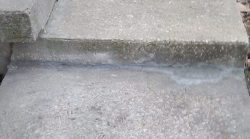The most important components of building aren’t always there. To make the building process safer, quicker, and more convenient, temporary solutions are frequently needed.
Shoring is one of these measures that is most crucial. Shoring enhances the stability and safety of the project in hilly terrain or on job sites where the work is done next to a property line. Here are a few justifications for why many projects rely on it so heavily.
Different Types of Shoring
Contrary to concrete retaining walls, which need many feet of clearance on either side, most excavation shoring simply needs an inch or two. Because of this, shoring is a great way to prevent ditches and holes from filling with dirt while still giving crews adequate space to operate. Some of the more typical types of shoring include:
- Soldier piles and lagging: to hold the dirt in place and stop it from shifting, vertical steelbeams are put into the earth, and wood lagging walls are installed between them. They work as a barrier to excessive ground pressure when combined. Walls made of steel or concrete might be employed as a more long-lasting solution.
- Tiebacks: to secure a wall to the ground in order to prevent it from shifting due to changes in the soil around it. Tiebacks can be screwed into the ground or driven into it.
- An earth retention method known as “soil nailing” is frequently used to reinforce retaining walls, level slopes, and provide excavation support.
Why Shoring Matters
The need for advanced shoring techniques has become much more necessary in recent years as urban space commands a higher premium and architects push the boundaries to build closer to property lines. But even in its most basic form, shoring serves a number of vital functions on a job site. Its many benefits include:
- Increased safety: Excavation is a necessary part of building foundations and basements. Shoring is necessary to safeguard the employees in the temporary ditches and holes. It ensures a safer work environment by holding the earthen walls up and prevents collapses.
- Accelerated scheduling: Digging out a site twice results in expensive delays that can cause a contactor to fall behind schedule. Likewise, crew members who are not distracted with worries about their own safety are less likely to make mistakes that cost them time.
- Lower prices: Avoiding the potential of excavations collapsing makes it considerably easier for builders to stay under budget.





